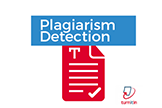Analisis Sifat Elektronik LaFeO3 co-doping Gd dan Co menggunakan Density Functional Theory dengan Generalized Gradient Approximation-Perdew--Burkew--Ernzerhof revised for solids untuk Aplikasi Sensor Gas Aseton
Abstract
Full Text:
PDF (Bahasa Indonesia)References
Benali, A. and Azizi, S. (2014). Structural, electrical and ethanol sensing properties of double-doping LaFeO3 perovskite oxides. Ceramics International, 40 (9): 14367–14373.
Zhou, Q., Fang, Z., Li, J., and Wang, M. (2015). Applications of TiO2 nanotube arrays in environmental and energy fields: A review. Microporous and Mesoporous Materials, 202 22–35.
Wang, X., Qin, H., Pei, J., Chen, Y., Li, L., Xie, J., et al. (2016). Sensing performances to low concentration acetone for palladium doped LaFeO3 sensors. Journal of Rare Earths, 34 (7): 704.
Witra (2017). Characteristics of a thick film ethanol gas sensor made of mechanically treated LaFeO3 powder.
Zhang, J., Tse, K., Wong, M., Zhang, Y., and Zhu, J. (2016). A brief review of co-doping. Frontiers of Physics, 11 (6).
Zhou, T., Zhang, T., Deng, J., Zhang, R., Lou, Z., and Wang, L. (2017). P-type Co3O4 nanomaterials-based gas sensor: Preparation and acetone sensing performance. Sensors and Actuators B: Chemical, 242.
Ji, H., Zeng, W., and Li, Y. (2019). Gas sensing mechanisms of metal oxide semiconductors: a focus review. Royal Society of Chemistry, 11 (22664).
Haryadi, H., Suprayoga, E., and Suhendi, E. (2022). An Analysis of Electronic Properties of LaFeO3 using Density Functional Theory with Generalized Gradient Approximation-Perdew-Burke-Ernzerhof Method for Ethanol Gas Sensors. Materials Research, 25.
Jain, A., Hautier, G., and Chen, W. (2013). The Materials Project: A materials genome approach to accelerating materials innovation. APL Materials, 1 (1): 011002.
Vaitkus, A., Merkys, A., and Gražulis, S. (2021). Validation of the Crystallography Open Database using the Crystallographic Information Framework. Journal of Applied Crystallography, 54 (2).
Sorescu, D.C. (2006). First-principles calculations of the adsorption and hydrogenation reactions of CHx(x=0,4) species on a Fe(100) surface. Physical Review B, 73 (155420).
Sorescu, D.., Thompson, D.., Hurley, M.., and Chabalowski, C.. (2002). First-principles calculations of the adsorption, diffusion, and dissociation of a CO molecule on the Fe (100) surface. Physical Review B, 66 (3).
Harrison, W.A. (1989). Electronic Structure and the Properties of Solids. Dover Publications.
Walsh, A., Silva, J.L.F. Da, and Wei, S.-H. (2008). Origins of band-gap renormalization in degenerately doped semiconductors. Physical Review B, 78 (075211).
DOI: https://doi.org/10.17509/wafi.v7i2.51439
Refbacks
- There are currently no refbacks.
Copyright (c) 2022 Wahana Fisika

This work is licensed under a Creative Commons Attribution-ShareAlike 4.0 International License.
Wahana Fisika e-ISSN : 2549-1989 (SK no. 0005.25491989/JI.3.1/SK.ISSN/2017.02 ) published by Physics Program , Universitas Pendidikan Indonesia Jl. Dr.Setiabudhi 229 Bandung. The journal is indexed by DOAJ (Directory of Open Access Journal) SINTA and Google Scholar. Contact: Here
 Lisensi : Creative Commons Attribution-ShareAlike 4.0 International License.
Lisensi : Creative Commons Attribution-ShareAlike 4.0 International License.







